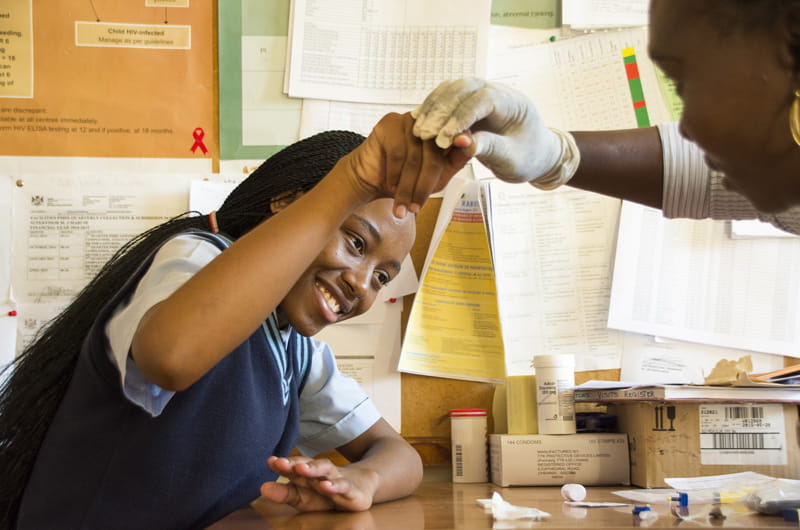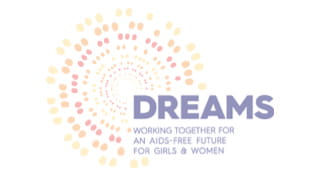In Africa, Fighting HIV in Young Mothers Through Education
 By Frank Otto
By Frank Otto

- Drexel Environmental Collaboratory Releases Cross-Sector Findings on Severe Weather Recovery Challenges
- Drexel Launches the Manuel Stamatakis Center for Alternative Investments at the LeBow College of Business
- How and When Could AI Be Used in Emergency Medicine?
- Drexel Receives $1.4 Million Grant to Establish Hub for Literacy Reform

Each year, roughly 2.5 million more people are diagnosed with HIV. More than 70 percent of those new infections, approximately 1.8 million people, are from sub-Saharan African countries.
In those countries, women account for 58 percent of those living with HIV. And through the leadership of a new Drexel University faculty member, a program launched this month will seek to curb those numbers by reaching out to one of the most vulnerable populations: young mothers.
“Our program is intended to address a key social determinant of health: education,” said Ali Groves, PhD, an assistant professor who joined the Dornsife School of Public Health this fall. “Educational attainment has been associated with increased employment, resources and capacity to make health-related decisions — each of which, in turn, can positively impact a myriad of health outcomes, especially HIV.”
Drexel University was announced as one of the winners of the DREAMS Innovation Challenge, an $85 million investment funded by the U.S. President's Emergency Plan for AIDS Relief (PEPFAR); Janssen Pharmaceutica NV (Janssen), one of the Janssen pharmaceutical companies of Johnson & Johnson; and ViiV Healthcare. The project, led by Groves and dubbed MAMAS (for Mentoring Adolescent Mothers At School), will seek to encourage new adolescent mothers to finish their schooling by enlisting the guidance of “mentor mothers” and the program will be implemented over the next two years in South Africa.
“If we do not contain and reduce HIV risk among adolescents and, particularly, among adolescent girls, we are not investing in the future of Africa,” Groves said.

The grant will be managed by JSI Research & Training Institute, Inc., under the DREAMS Innovation Challenge, which aims to accelerate progress toward the target of achieving a 40 percent reduction in new HIV infections among adolescent girls and young women in the highest-burden areas of a group of 10 sub-Saharan African countries by the end of 2017.
DREAMS itself is a $385 million public-partnership, led by PEPFAR and with the support of the Bill & Melinda Gates Foundation, Girl Effect, Johnson & Johnson, Gilead Sciences, and ViiV Healthcare, to support adolescent girls and young women to become Determined, Resilient, Empowered, AIDS-free, Mentored, and Safe.
A huge contributing factor to HIV prevalence in sub-Saharan Africa is a lack of safe-sex practices in an area where HIV levels are high. The lack of safe-sex practices can be reliably measured by the rates of unintended pregnancies before the age of 20. In South Africa’s Umlazi Township, where Groves’ project will focus, a third of all births occur among adolescent mothers. Additionally, HIV prevalence among 15-24 year-olds in Umlazi’s province, KwaZulu-Natal, is 12 percent. And when you look at that same population but factor in those who have been pregnant, HIV prevalence more than doubles to 25.8 percent.
When dealing with that same adolescent mother population, roughly two thirds never return to school. Research has shown that education significantly impacts the health of both mothers and their children, often resulting in the reduction of risky behavior that could lead to HIV infection.
Especially working against these mothers’ return to school is a lack of a support network for their first foray into motherhood.
According to research already conducted by the project’s team, a significant number of adolescent South Africans who have both had a child and been diagnosed with HIV reported that they’ve felt more social stigma due to their unintended pregnancy than their HIV status.
“Young women in our study felt their pregnancy was more visible and something that impacts their current life, whereas HIV could be hidden,” Groves said. “The young women described how they may not feel the impact of being HIV-positive for years or even decades, but pregnancy is imminent and apparent.”
Stigma associated with their pregnancy, and subsequent lack of guidance, makes the option of finishing school unlikely at best.
That’s where Groves’ mentor mothers come in.
The mentor mothers are a group of women chosen by Groves’ team who are between 20 and 24 years old and finished their secondary education after having a child. It will be their full-time job to provide peer support to the younger mothers assigned to them.
Research in both Malawi and the United States has shown that peer mentoring can make a transition back to school easier. And where simply talking through problems won’t cut it, the mentor mothers will be able to guide their younger mentees to pre-existing South African social support programs, especially the Child Support Grant (CSG). This grant is a state-sponsored cash transfer — which the program will encourage the young mother to use for paying school fees and child care. Those, among other financial pressures, are often burdensome to young mothers, Groves said, and discourage re-enrollment.
In the end, Groves hopes her new program will improve the resiliency of young mothers in South Africa and make returning to school much more common. With a surge in education levels, Groves and her team hope that risky behaviors leading to HIV infections decrease. Moreover, a boost in resiliency and knowledge will likely be passed along to children and increase their likelihood to avoid risky behaviors relating to HIV.
If Groves’ program proves particularly effective in South Africa, she hopes that it can be applied to the other countries in Africa affected by the HIV epidemic and, even, to the United States, to reduce unsafe sex here.
“If effective, the program could certainly be adapted for other populations of under-resourced youth who need extra support to return to and stay in school,” Groves said.
In This Article
Contact
Drexel News is produced by
University Marketing and Communications.